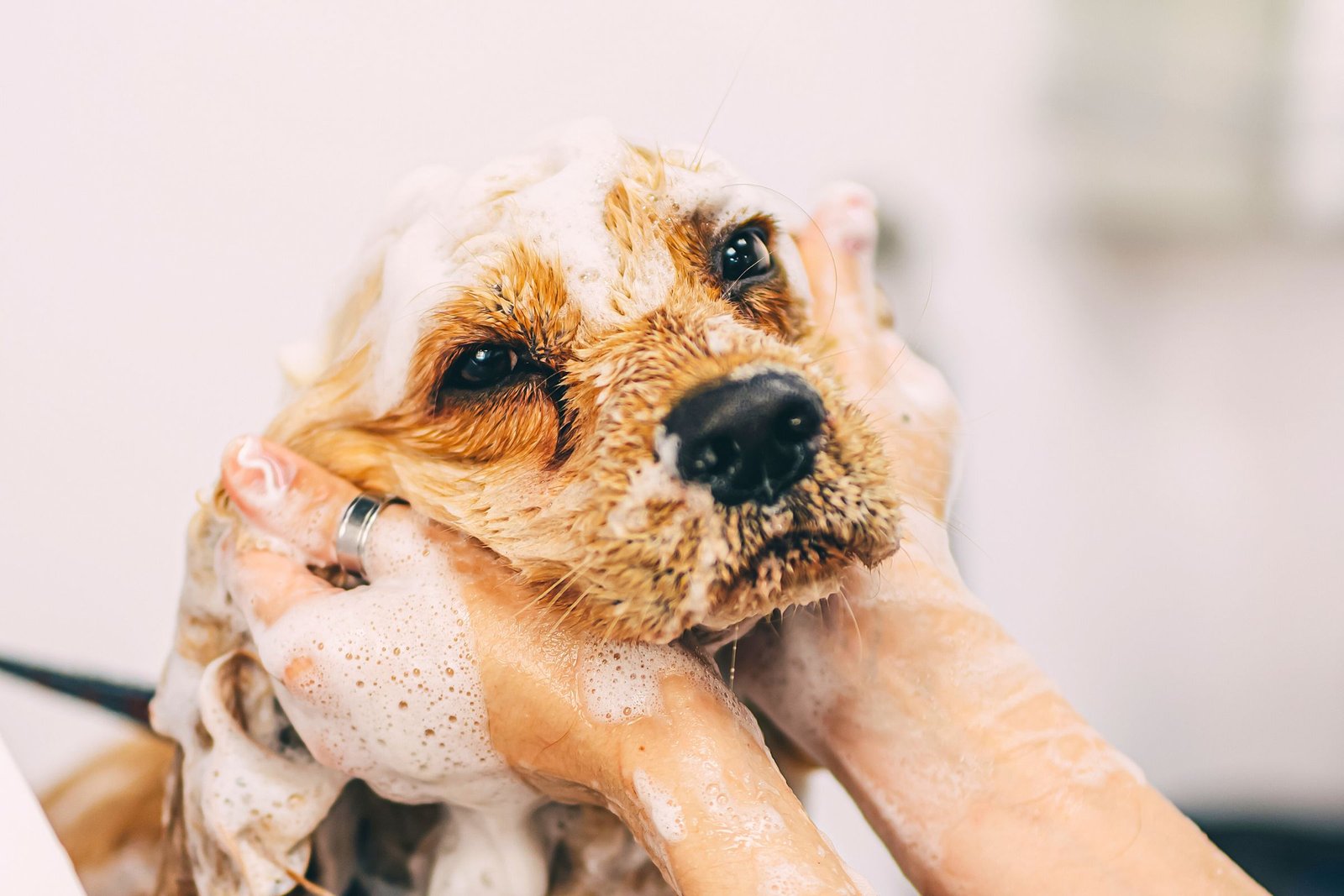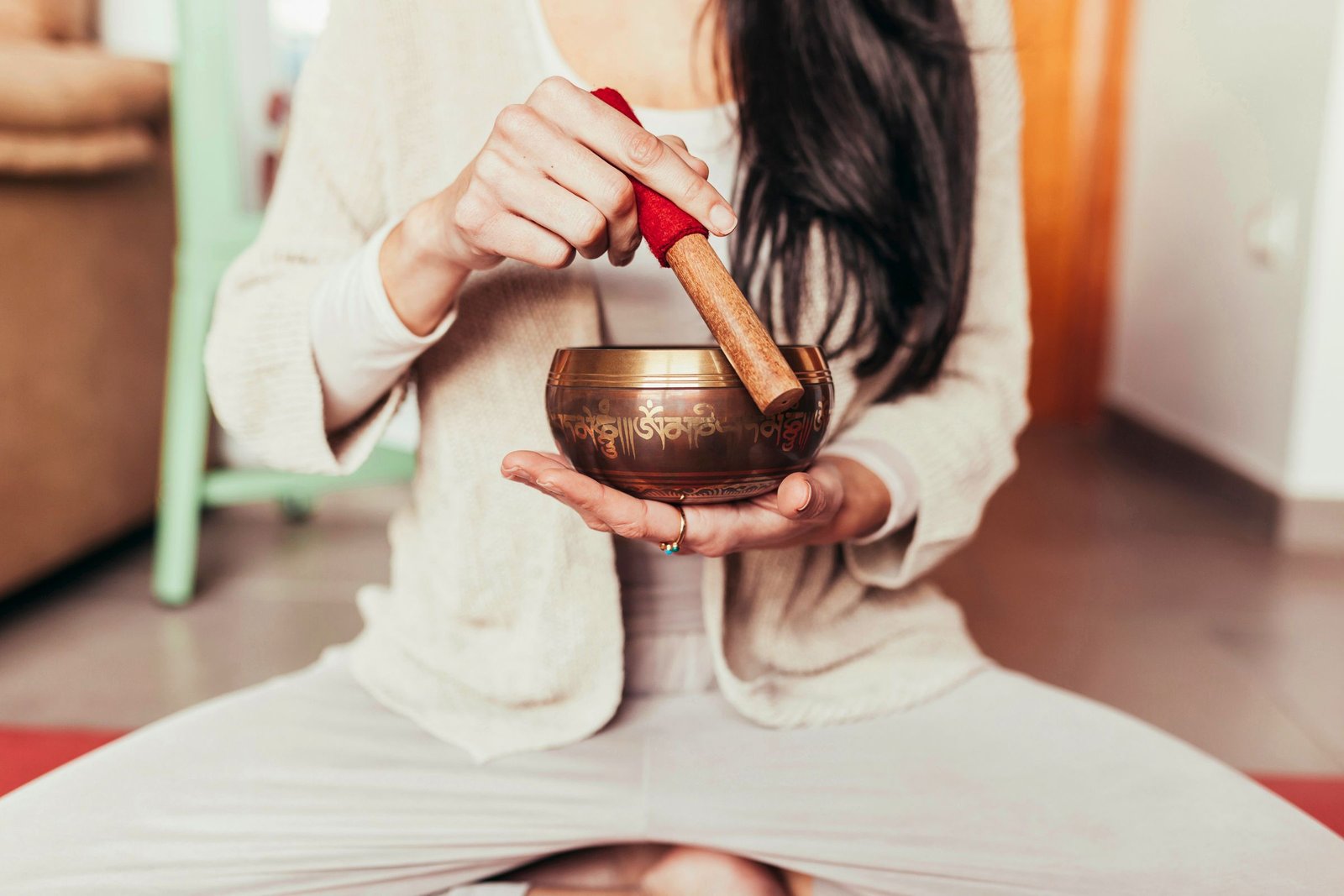In the world of canine care, the question of when and how to bathe your furry friend is a common concern for pet owners. As a responsible dog owner, it’s crucial to understand the ins and outs of dog bathing – from the frequency of baths to the use of shampoo, towel drying, and even the debated topic of blow drying. In this comprehensive guide, we’ll address these questions and more to ensure your dog stays clean, healthy, and content.
How Often Should You Bathe Your Dog?

Determining the optimal frequency for bathing your dog requires a thoughtful consideration of various factors, including their breed, coat type, and lifestyle. This section delves deeper into these considerations to help you tailor your dog’s bathing routine to their unique needs.
Breed-specific Requirements: Different dog breeds have distinct coat characteristics that influence how often they should be bathed. For example, breeds with oily coats, like Basset Hounds or Retrievers, may require more frequent baths to prevent a buildup of oils that could lead to skin issues. On the other hand, breeds with water-resistant coats, such as Labradors, may not need as many baths.
Coat Type Matters: Dogs with short, smooth coats often require less frequent bathing compared to their long-haired counterparts. Short-haired breeds, like Dachshunds or Beagles, may only need a bath every couple of months, as their coats are less prone to matting and trapping dirt. In contrast, long-haired breeds, like Shih Tzus or Maltese, may benefit from more regular baths to maintain a healthy and tangle-free coat.
Indoor vs. Outdoor Dogs: The lifestyle of your dog plays a crucial role in determining their bathing needs. Dogs that primarily stay indoors and have limited exposure to dirt and outdoor elements may require baths less frequently than dogs that love outdoor adventures. Outdoor dogs, especially those fond of rolling in mud or exploring wooded areas, may need more regular baths to keep their coats clean and free from potential irritants.
General Guidelines: While individual factors are essential, most veterinarians recommend a general guideline of bathing your dog every 4-6 weeks. This timeframe allows for a balance between maintaining your dog’s cleanliness and ensuring their natural oils aren’t stripped away, which could lead to skin dryness and irritation. However, it’s crucial to monitor your dog’s specific needs and adjust the bathing frequency accordingly.
Specific Circumstances: Certain situations may necessitate more frequent baths. For instance, if your dog encounters a skunk or gets into a mess that regular brushing can’t resolve, immediate bathing becomes crucial. Dogs with certain medical conditions or allergies might also require more frequent, medicated baths as prescribed by a veterinarian.
By understanding these considerations, you can tailor your dog’s bathing schedule to align with their unique characteristics and lifestyle, promoting not only cleanliness but also their overall health and well-being. Always observe your dog’s behavior and skin condition to ensure that the chosen bathing frequency is optimal for their individual needs.
To Shampoo or Not to Shampoo?

Choosing the right shampoo for your dog is a vital aspect of their grooming routine, impacting not only their cleanliness but also their overall well-being. This section provides in-depth guidance on selecting the appropriate shampoo, highlighting key considerations to ensure your furry friend’s skin and coat remain healthy.
Understanding Your Dog’s Needs: The first step in choosing the right shampoo is understanding your dog’s specific requirements. Shampoos are formulated to address various concerns such as sensitive skin, flea infestations, shedding issues, or specific skin conditions. Identify your dog’s unique needs to select a shampoo that caters to those requirements.
Mild, Dog-Specific Shampoos: Opt for mild, dog-specific shampoos that are specifically designed for canine skin and coat. These formulations are balanced to maintain the natural pH level of a dog’s skin, preventing irritation and dryness. Avoid using human shampoos, as they often contain ingredients that can be too harsh for a dog’s sensitive skin, leading to discomfort and potential health issues.
Tailoring Shampoo to Skin Conditions: If your dog has specific skin conditions, consult with your veterinarian to choose a shampoo that addresses those issues. Medicated shampoos, designed to soothe irritated skin or treat certain dermatological conditions, should be used under veterinary guidance to ensure their effectiveness and safety for your pet.
Dilution for Gentleness: Regardless of the chosen shampoo, it’s advisable to dilute it before application. Dilution helps distribute the product evenly and reduces the risk of skin irritation. Follow the instructions on the shampoo bottle or seek guidance from your veterinarian on the appropriate dilution ratio for your dog’s specific needs.
Thorough Rinsing: After shampooing, thorough rinsing is crucial to remove all traces of the product from your dog’s coat. Leftover shampoo residue can cause skin irritation and discomfort. Ensure that you rinse your dog’s coat completely, paying attention to areas with thicker fur or skin folds where shampoo may linger.
Sensitivity Testing: Before using a new shampoo, perform a sensitivity test on a small patch of your dog’s skin. This helps identify potential allergic reactions or sensitivities. If any adverse reactions occur, discontinue use immediately and consult your veterinarian for alternative recommendations.
By paying close attention to your dog’s individual needs and selecting the right shampoo accordingly, you contribute to the overall health and comfort of your pet. Regular grooming with an appropriate shampoo not only keeps your dog clean but also helps maintain a shiny, healthy coat and reduces the risk of skin issues.
Towel Drying Techniques for a Happy Pooch

The post-bath drying process is a crucial step in ensuring your dog’s comfort and well-being. This section explores the art of towel drying, emphasizing gentle techniques to make the experience enjoyable for your furry friend.
Choosing the Right Towel: Opt for a soft and absorbent towel dedicated to your dog’s grooming routine. Avoid rough or scratchy towels, as they may cause discomfort or irritate your dog’s skin. A dedicated dog towel can be an excellent investment, as it provides the right balance of absorbency and gentleness.
Gentle Patting Motion: The key to effective towel drying lies in a gentle patting motion rather than vigorous rubbing. Pat your dog’s coat in the direction of hair growth to absorb excess water without causing unnecessary stress. This method is especially important for dogs with long or curly hair, as vigorous rubbing can lead to tangles and matting.
Mindful Drying of Ears and Paws: Take extra care when drying your dog’s ears and paws. These areas are prone to retaining moisture, creating an environment conducive to infections. Use a separate, clean section of the towel for these sensitive areas, gently patting and absorbing moisture without inserting the towel into the ears. For paws, ensure that the spaces between the toes are thoroughly dried to prevent fungal growth.
Warm Towels in Cold Weather: During colder seasons, consider using a warm towel for drying to prevent your dog from feeling chilly after the bath. You can warm the towel in a dryer for a short period or use a towel warmer if available. Always check the temperature of the towel to avoid any discomfort for your pet.
Calm and Reassure: Dogs may initially find the towel drying process unusual, so it’s essential to maintain a calm and reassuring demeanor. Speak to your dog in a soothing voice, offer gentle petting, and provide treats as positive reinforcement. This not only makes the experience more pleasant but also strengthens the bond between you and your canine companion.
Air Drying for Certain Breeds: Some dog breeds with water-resistant coats may benefit from a partial air-dry after towel drying. Allow them to shake off excess water, and then let them air dry naturally. This approach can help maintain the natural oils in their coat and reduce the need for extensive towel drying.
By adopting these gentle towel drying techniques, you contribute to a positive post-bath experience for your dog. Not only does it help prevent discomfort and potential health issues, but it also fosters a sense of trust and relaxation during grooming sessions.
The Blow Drying Dilemma: To Blow Dry or Not?

The decision to use a blow dryer on your furry companion post-bath is a topic that sparks ongoing debate within the pet care community. This section explores the considerations, benefits, and potential drawbacks of blow drying your dog, shedding light on the dilemma faced by pet owners.
Individual Tolerance Levels: Dogs, like humans, have individual preferences and tolerances. Some dogs may tolerate blow drying without issue, while others may find the experience stressful or frightening. It’s essential to observe your dog’s behavior during the blow drying process and adjust your approach accordingly.
Low-Heat and Safe Distance: If you opt to blow dry your dog, it’s crucial to use a low-heat setting on the dryer. High heat can be uncomfortable for dogs and may even cause burns or skin irritation. Additionally, maintain a safe distance between the blow dryer and your dog to prevent discomfort or injury. Always monitor your dog’s reactions and be prepared to stop the process if they appear distressed.
Consideration for Long-Haired Breeds: Long-haired breeds, such as Poodles or Afghan Hounds, may benefit from blow drying to prevent matting and ensure their coats dry thoroughly. In these cases, using a blow dryer on a low-heat setting can be more efficient than relying solely on towel drying.
Air Drying as a Natural Alternative: Many experts argue that allowing your dog to air dry is the most natural and stress-free method. Dogs have a natural instinct to shake off excess water, aiding in the drying process. Air drying allows the coat to dry at its own pace, preserving natural oils and reducing the risk of skin issues that may arise from excessive heat.
Potential Stress Factors: Blow drying can be a source of stress for some dogs due to the noise and sensation of the dryer. It’s essential to introduce the blow dryer gradually, associating it with positive experiences and rewards to reduce anxiety. For dogs that remain uneasy despite positive reinforcement, exploring alternative drying methods may be advisable.
Alternative Drying Methods: If blow drying proves challenging for your dog, consider alternative drying methods, such as using a fan or allowing them access to a warm, well-ventilated room. These methods provide a compromise between the efficiency of blow drying and the stress reduction associated with air drying.
In conclusion, the blow drying dilemma hinges on the individual needs and preferences of your dog. While blow drying can be beneficial for certain breeds, it’s essential to approach it with caution, using low heat and monitoring your dog’s comfort level. Ultimately, the decision between blow drying and air drying depends on your dog’s tolerance and your commitment to ensuring a positive grooming experience.
Important Tips for a Positive Bathing Experience

Ensuring a positive bathing experience for your dog involves more than just soap and water. This section provides essential tips to enhance the overall grooming process, making bath time a pleasant and stress-free activity for both you and your canine companion.
Ear and Eye Protection: To prevent water and shampoo from entering your dog’s ears and eyes, consider using cotton balls or specially designed ear covers. Gently place cotton balls in your dog’s ears before the bath to act as a barrier. Be cautious when applying shampoo around the head area, and avoid getting it into their eyes. This extra precaution helps minimize discomfort and ensures a more enjoyable bath experience.
Brush Before Bathing: Preparing your dog’s coat before the bath can significantly improve the efficiency of the grooming process. Brushing helps remove loose hair, tangles, and mats, preventing them from becoming more challenging to address during the bath. It also allows the water and shampoo to penetrate the coat more effectively, resulting in a thorough clean and reducing the risk of skin issues.
Positive Reinforcement: Positive reinforcement plays a crucial role in shaping your dog’s attitude towards bathing. Throughout the bathing process, offer treats and praise to reward positive behavior. Consider using special treats reserved for grooming sessions to create a positive association. Reinforcing good behavior during and after the bath builds trust and makes future grooming experiences more enjoyable for your dog.
Regular Inspection: Bath time provides an excellent opportunity for a thorough inspection of your dog’s skin and coat. Take advantage of this time to check for any lumps, bumps, or abnormalities that may require veterinary attention. Pay attention to changes in the skin, lumps under the fur, or any signs of discomfort. Early detection of issues can lead to timely intervention and improved overall health for your pet.
Mindful Handling and Calm Demeanor: Approach bath time with a calm and composed demeanor. Dogs are sensitive to their owners’ emotions, so maintaining a relaxed attitude helps reassure them. Handle your dog gently, and avoid sudden movements or loud noises that may startle them. The more comfortable your dog feels during the grooming process, the more positive their association with bathing will become.
Appropriate Water Temperature: Ensure the water temperature is comfortable for your dog. Lukewarm water is generally ideal, as water that is too hot or too cold can cause discomfort and anxiety. Test the water temperature with your wrist before starting the bath to ensure it’s pleasant for your dog.
By incorporating these tips into your dog’s bathing routine, you not only enhance the overall experience but also contribute to a positive attitude towards grooming. A stress-free bath time fosters a stronger bond between you and your furry friend and promotes their overall well-being.
Conclusion

In conclusion, maintaining a regular and positive grooming routine is a cornerstone of responsible pet ownership, and bathing plays a pivotal role in your dog’s overall well-being. Tailoring the frequency of baths to your dog’s breed, coat type, and lifestyle ensures a balance between cleanliness and preserving essential oils. Choosing the right shampoo, whether for sensitive skin or specific conditions, contributes to a healthy coat and skin. After a refreshing bath, employing gentle towel drying techniques and considering the blow drying dilemma based on your dog’s comfort level further enhance the grooming experience. Incorporating crucial tips, such as ear and eye protection, pre-bathing brushing, positive reinforcement, and regular inspections, not only makes bath time enjoyable but also serves as an opportunity to monitor your dog’s health. By approaching grooming with care, patience, and consideration for your dog’s individual needs, you not only keep them clean and happy but also strengthen the bond between pet and owner. In the end, a positive bathing experience is not just about cleanliness – it’s a key aspect of the holistic care that contributes to a thriving and content canine companion.








